How the Singapore Armed Forces shipped over 400 military vehicles to Australia for Exercise Wallaby
The Forward Support Group forms the backbone of the exercise, doing everything from setting up campgrounds to vehicle maintenance to medical support.

ME3 Chen Tianxiang, who is the Forward Support Group Maintenance 2IC at Exercise Wallaby, is responsible for ensuring that assets are well maintained and kept operationally ready. (Photo: CNA/Marcus Mark Ramos)
SHOALWATER BAY, Queensland: For soldiers participating in the Singapore Armed Forces' (SAF) largest unilateral overseas training exercise, the Forward Support Group (FSG) plays an integral but occasionally overlooked role.
A composite of different units within the SAF, it is responsible for moving hundreds of huge military vehicles more than 5,000km from Singapore to Australia for Exercise Wallaby, among a myriad other functions.
For one, when soldiers arrive at their campgrounds in Shoalwater Bay Training Area, everything – including sleeping tents – will have already been set up by FSG, which starts from scratch and has three days of lead time.
This year, the group had a mammoth task on its hands, with the the largest edition of Exercise Wallaby in seven years featuring about 4,300 SAF personnel and 450 assets such as armoured fighting vehicles.
Military Expert 3 (ME3) Chen Tianxiang, second-in-charge of the FSG’s maintenance team, told reporters on Monday (Oct 9) that Exercise Wallaby is on a “much bigger scale” compared with other overseas exercises conducted by the SAF.
“400-plus assets is really a huge number,” he said, glancing at rows of Terrexes, Belrex protected combat support vehicles, Leopard 2SG main battle tanks and Bronco all-terrain tracked carriers behind him, covered in desert dust.
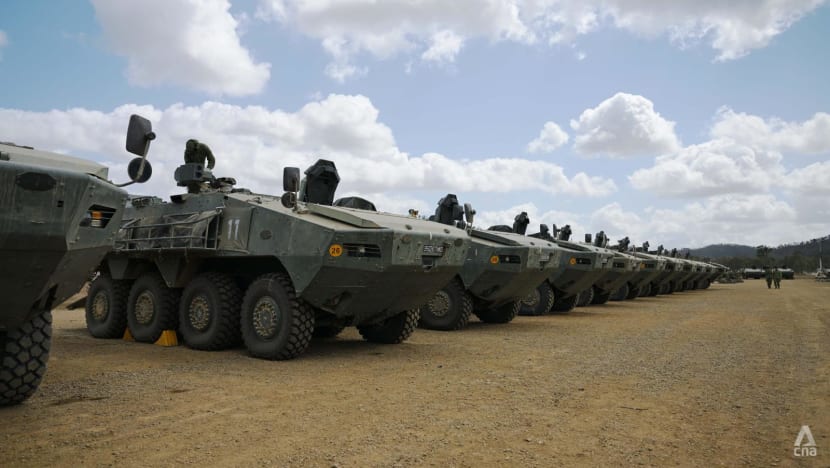
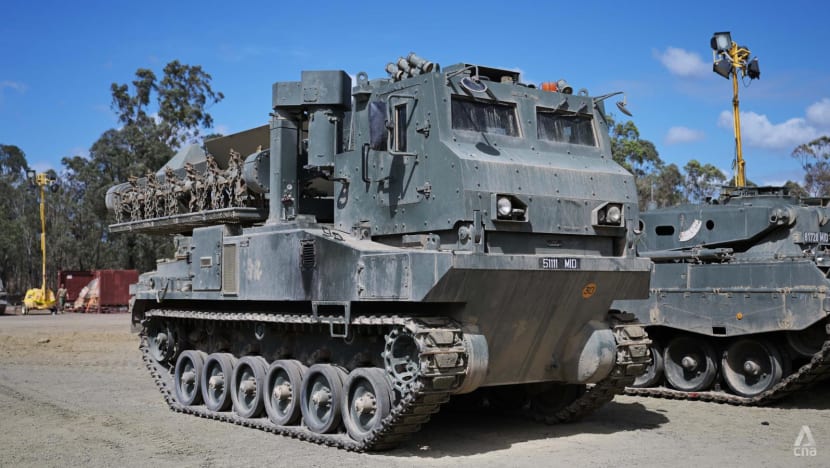
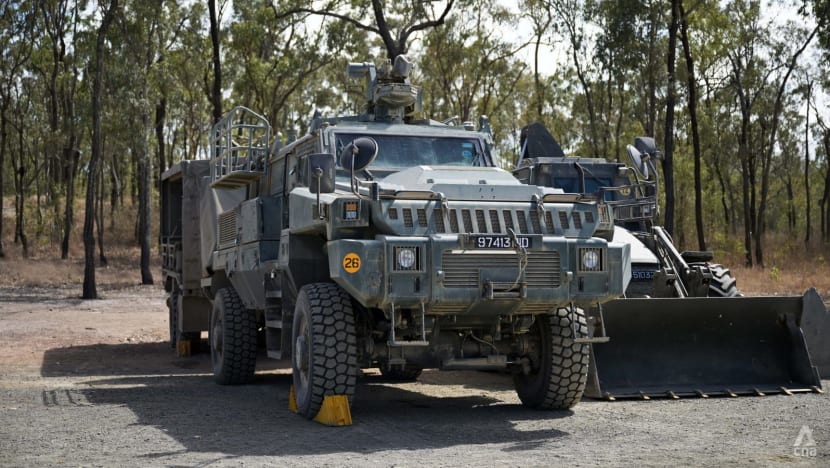
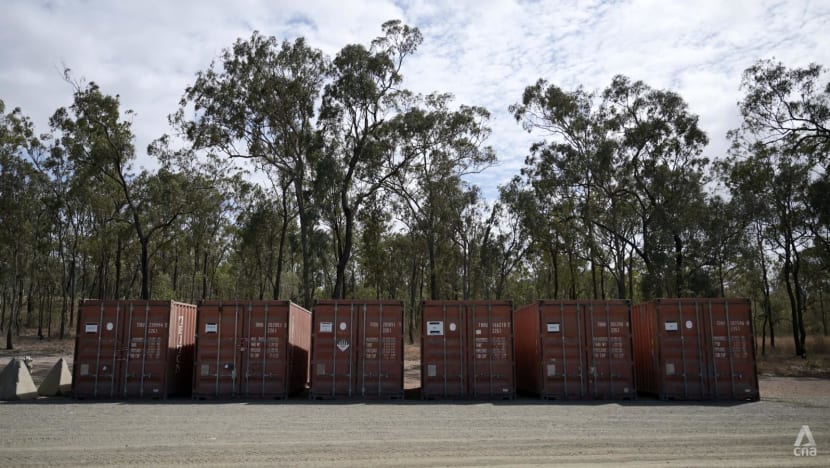
INSPECTING, WASHING, DISASSEMBLING
So how did the vehicles – totalling more than 420 – get from Singapore to Australia?
Planning for the unusually large shipments began in February, while the actual work kicked off about two months later.
The vehicles include tanks, five-tonners that transport troops or goods, a Trailblazer counter-mine vehicle used to disable land mines, and wheeled or armoured recovery vehicles that tow away broken-down machines.
FSG's maintenance team, comprising 36 personnel, first had to inspect them in Singapore.
Like a Lego set, the vehicles were then disassembled and thoroughly washed, before their individual parts were examined by an Australian inspector to ensure they were free of mud and sand.
Once that was completed, the team put the vehicles back together, performed a final inspection and prepared them to be shipped over to Australia.
All the vehicles were taken to a PSA port and loaded on a commercial ship. It took roughly 10 days to get to the Australian harbour, then another three for the vehicles to be transported on low loader truck trailers to Shoalwater Bay Training Area.
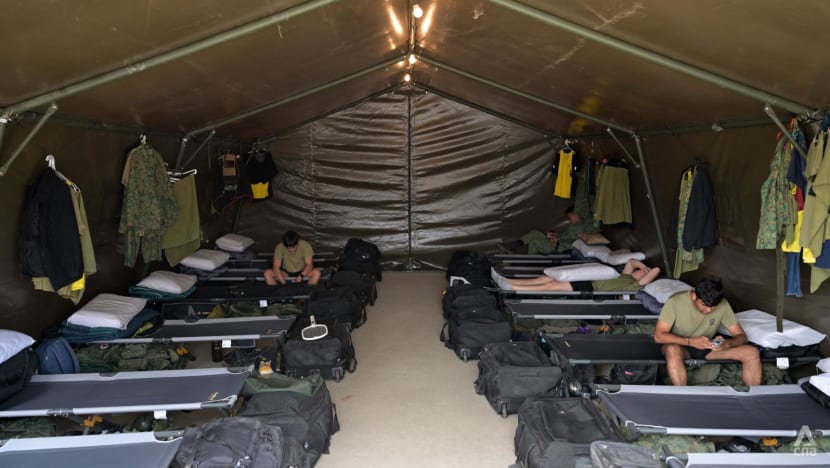
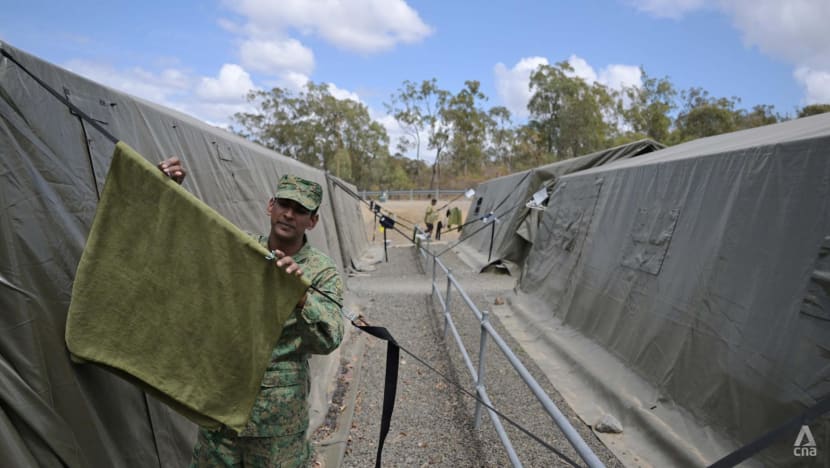
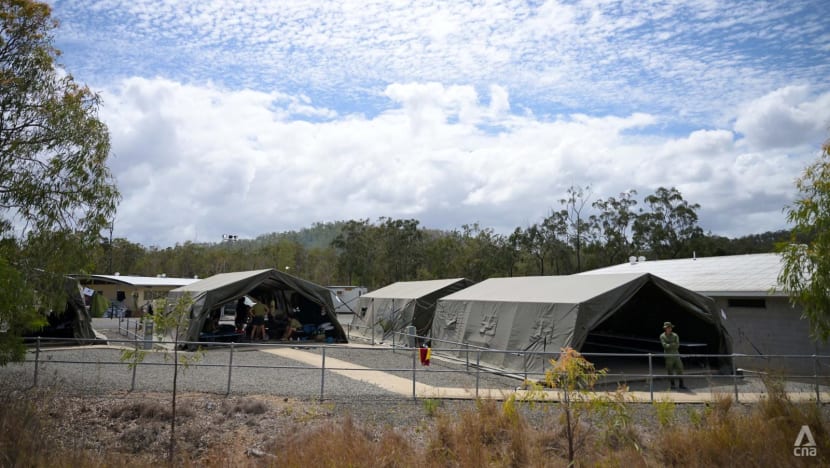
SETTING UP CAMPGROUNDS
FSG is the primary custodian of the Shoalwater Bay Training Area, and its maintenance team is also involved in setting up camp infrastructure there – namely Camp Growl and Tiger Hill.
Reporters were given a tour of the Camp Growl grounds which can house up to 1,000 personnel.
The tents there are mostly for sleeping – all 74 of them, housing 14 to 16 soldiers each. There are others for medical, planning and cookhouse purposes, and even one specifically for soldiers to charge their electronic devices.
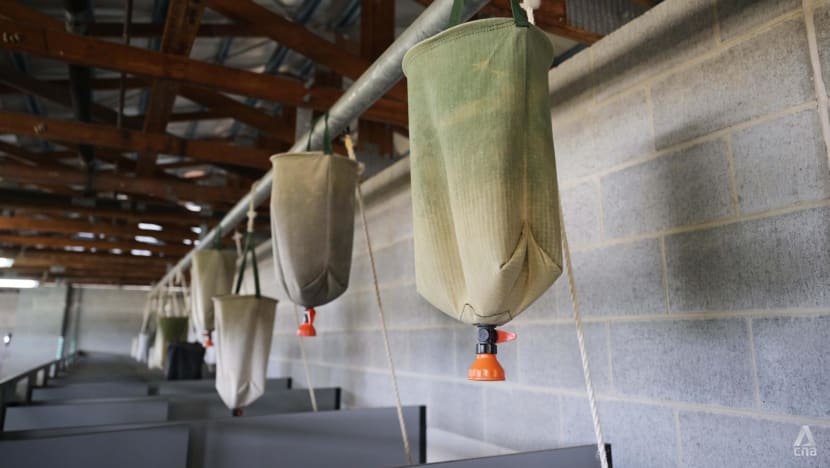
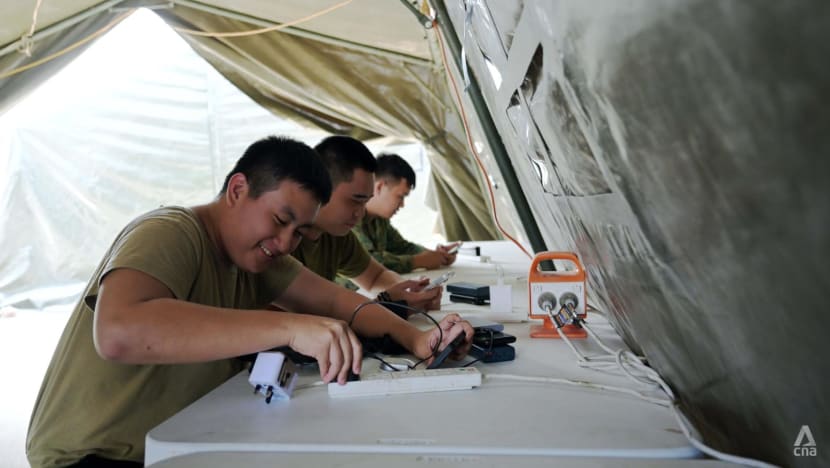
Vendors set up the tents while FSG oversees everything that goes inside them, like the cot beds that soldiers sleep on.
Over at the toilet facilities, soldiers are instructed to keep to two-and-a-half pails of water while taking a shower.
The water is piped from a nearby creek and has to be held in a carrier above individual cubicles. Twisting a cap dispenses the water for a shower.
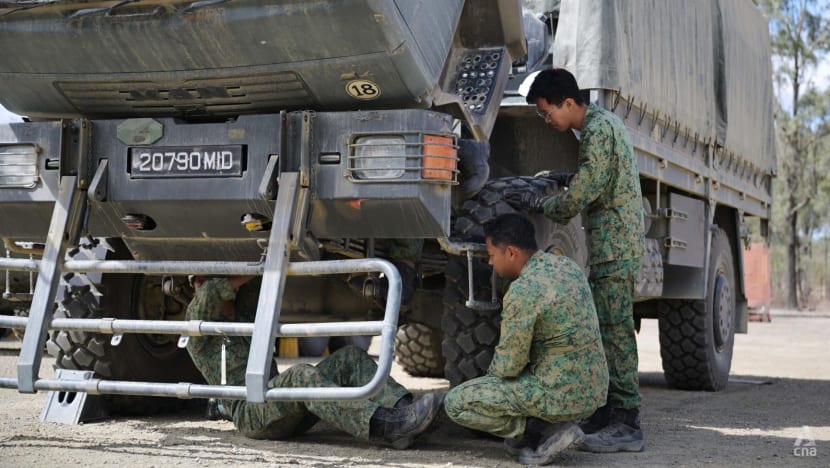
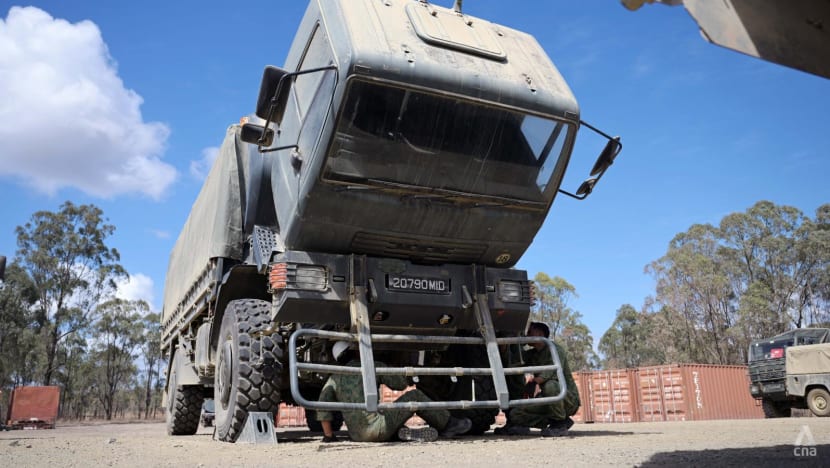
Once training exercises begin, FSG's maintenance personnel are in charge of keeping the vehicles in tip-top shape and making repairs when necessary.
The usual difficulties that crop up are tyre punctures and being bogged down in the mud, which then calls for recovery vehicles to pull them out.
Each vehicle has its own set of challenges, though the Terrexes and Leopard 2SG tanks are the "most tedious" to disassemble and inspect, said FSG's ME3 Chen.
The group also ensures that training resources are well-managed and all hazards are cleared.
"We need to take care of one another and look out for potential blind spots," added ME3 Chen, who hails from the 9th Army Maintenance Base.
"There's a lot of different protocols, signage, banners; and even our pledge that we took to ensure that everyone is well aware of safety and what is going on during training, and to ask (soldiers) to keep out of the dangerous areas."
When Exercise Wallaby ends on Oct 15, it is FSG that will pack everything up and get the vehicles back to Singapore.
ME3 Eustace Eugene Teoh, an operations warrant officer from the group, said his team arrived a week before the exercise began – and will leave a week after everyone else.
"First in," he said with a grin. "Last out."

















